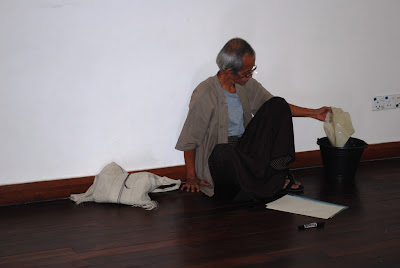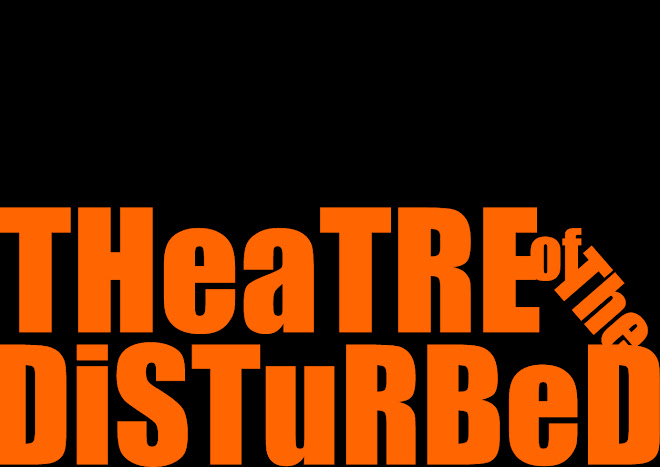

Artist San Oo's Performance

Artist San Oo's Performance

Artist U Lu Wa Lay's Performance

Artist U Lu Wa Lay's Performance

Artist U Lu Wa Lay's Performance

Artist's U Lu Wa Lay's Performance

Artist U Lu Wa Lay's Performance

Poet Lu San's Poetry Recital

Poet Hein Myat Zaw's Poetry Recital

Poet Hein Myat Zaw's Poetry Recital

Artist Nyein Chan Su's Performance

Artist Nyein Chan Su's Performance

Artist Nyein Chan Su's Performance

Poetry recital (Poet Unknown)

Poetry recital (Poet Unknown)

Poet Ngu Eine Htet Myat's Poetry Recital

Poet Parpa's Poetry Recital

Poet Parpa's Poetry Recital

Poet Parpa's Poetry Recital

Artist Aung Ko's Performance

Artist Aung Ko's performance

Artist Aung Ko's performance

Body Temporary Public

Poet Kyi Zaw Aye's Poetry Recital

Poet Sai Win Myint's Poetry Intervention

Artist Jimmy's Performance

Artist Jimmy's performance

Poet Maung Pyae Min's poetry recital

Poet Maung Pyae Min's poetry recital

Poet Maung Pyae Min's poetry recital

Poet Aung Pyae Sone's Action Poetry/Performance

Poet Aung Pyae Sone's Action Poetry/Performance

Poet Aung Pyae Sone's Action Poetry/Performance

Artist Aye Ko's Performance

Artist Aye Ko's Performance

Poet Myint Aung's Poetry Performance

Poet Myint Aung's Poetry Performance

Poet Maung Maung Zeya's Poetry Recital

Poet Maung Maung Zeya's Poetry Recital

Artist Aung Myint's Performance

Artist Aung Myint's Performance

Artist Aung Myint's Performance

Artist Aung Myint's Performance

Artist Aung Myint's Performance

Mrs. Lorene Tamain (Theatre of the disturbed) announcing the programme of Body Temporary

Poet Myint Aung (Zeyar Lynn) on the influence of Futurist poetry on the development of Myanmar Modern Poetry (1960-Today)

Body Temporary Public

Body Temporary Public

Adele Tan on the development of Performance art
Body Temporary
27-28 February 2009
Yangon, Myanmar
Body Temporary: Performance art has recently been accepted as a contemporary medium of art expression in Myanmar. And yet historical facts about performance art in both global and regional contexts are to be taken into account so as to enrich the knowledge of this art form in Myanmar.
In the 1970s, performance art came to be accepted as one of most important art expressions of the second part of the 20th Century. Nevertheless, different influences on the development of performance art can be traced back to the early 20th century art movements such as Futurism, Russian Constructivism, Dada, Surrealism, Bauhaus, and later development in the United States of America and Europe (from Jackson Pollock’s action painting to Happenings to John Cage’s emphasis on chance to Andy Warhol’s pop art to the Fluxus movement).
Indeed, it is evident that futurist ideas played a vital role in the development of performance art although futurist activities mainly focus on issuing manifestos on different genres of art and controversial public-intervention-like activities.
Therefore in commemoration of the 100th anniversary of the founding of Futurism, the performance event “Body Temporary” is organized by théâtre des dérangés in collaboration with Alliance Française de Rangoun (Myanmar).
For this event, théâtre des dérangés has invited a renowned scholar and art historian Adele Tan Wei Chuen from Singapore as the very first artist for the artist-in-residency programme of the group. Adele Tan will conduct a lecture on the development of performance art in global context (1900s-2000s) and the history of Chinese performance art during this event.
In additions, performance/poetry by local artists will be presented under the theme “Body Temporary” with the focus of defining time, space and self in contemporary context. The highlight of “Body Temporary” is that performance reflection, artists’ talk and open discussion between artists and audience will be moderated by Adele Tan.
In the 1970s, performance art came to be accepted as one of most important art expressions of the second part of the 20th Century. Nevertheless, different influences on the development of performance art can be traced back to the early 20th century art movements such as Futurism, Russian Constructivism, Dada, Surrealism, Bauhaus, and later development in the United States of America and Europe (from Jackson Pollock’s action painting to Happenings to John Cage’s emphasis on chance to Andy Warhol’s pop art to the Fluxus movement).
Indeed, it is evident that futurist ideas played a vital role in the development of performance art although futurist activities mainly focus on issuing manifestos on different genres of art and controversial public-intervention-like activities.
Therefore in commemoration of the 100th anniversary of the founding of Futurism, the performance event “Body Temporary” is organized by théâtre des dérangés in collaboration with Alliance Française de Rangoun (Myanmar).
For this event, théâtre des dérangés has invited a renowned scholar and art historian Adele Tan Wei Chuen from Singapore as the very first artist for the artist-in-residency programme of the group. Adele Tan will conduct a lecture on the development of performance art in global context (1900s-2000s) and the history of Chinese performance art during this event.
In additions, performance/poetry by local artists will be presented under the theme “Body Temporary” with the focus of defining time, space and self in contemporary context. The highlight of “Body Temporary” is that performance reflection, artists’ talk and open discussion between artists and audience will be moderated by Adele Tan.
Futurism: On 20 February 1909, the first manifesto of Futurism written by Italian poet Filippo Tommaso Marinetti was published in the French daily newspaper Le Figaro and an early 20th-century artistic movement that centred in Italy and emphasized the dynamism, speed, energy, and power of the machine and the vitality, change, and restlessness of modern life in general began.
Rebellious, innovative, and short-lived artistic movement initiated by a group of young Italian artists, Futurism was a great influence on the later development of modern art movements of the 20th century (Russian Constructivism, Dada and Surrealism are just to name a few). Most importantly, Futurist evenings and its varieties of performance contributed significantly to the development of performance art.
Futurist artists favoured movement and change over the static work of art and they provided an important impetus for the general shift in the modern artistic interest from product to process which was to be developed further by Marcel Duchamp and Conceptualism.
Futurism in fact is largely known for its manifestos on every possible medium of art available at that time: painting, sculpture, theatre, architecture, literature, design, film, music, dance, scenography, and pantomime and its process-oriented performance activities. Both their manifestos and activities were influential as well as inspiring to a great extent in the later development of performance art.
Futurism is considered an Italian artistic movement with parallel movements in Russia and Western-European countries. Significant members of the movement are Filippo Marinetti, Umberto Boccioni, Giovanni Papini, Luigi Russolo, Carlo Carra and Ivo Pannaggi.
Rebellious, innovative, and short-lived artistic movement initiated by a group of young Italian artists, Futurism was a great influence on the later development of modern art movements of the 20th century (Russian Constructivism, Dada and Surrealism are just to name a few). Most importantly, Futurist evenings and its varieties of performance contributed significantly to the development of performance art.
Futurist artists favoured movement and change over the static work of art and they provided an important impetus for the general shift in the modern artistic interest from product to process which was to be developed further by Marcel Duchamp and Conceptualism.
Futurism in fact is largely known for its manifestos on every possible medium of art available at that time: painting, sculpture, theatre, architecture, literature, design, film, music, dance, scenography, and pantomime and its process-oriented performance activities. Both their manifestos and activities were influential as well as inspiring to a great extent in the later development of performance art.
Futurism is considered an Italian artistic movement with parallel movements in Russia and Western-European countries. Significant members of the movement are Filippo Marinetti, Umberto Boccioni, Giovanni Papini, Luigi Russolo, Carlo Carra and Ivo Pannaggi.
Special thanks to Goethe Institut (Indonesia) for their generous support.
